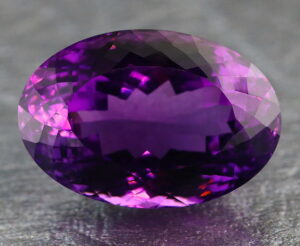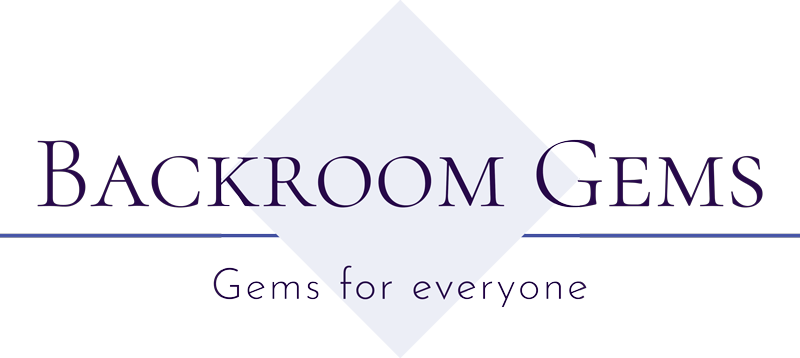February's Birthstone
 While several of the months have more than one birthstone to choose from, February shines in all of its purple glory with amethyst being the star of the show. In the last century amethyst has been the one and only gem for Pisces all over the world. In years prior, however, hyacinth and pearl were also part of the birthstone calendar! It dropped off after the 20th century and since then Valentine’s babies have been sporting shades of purple. Luckily shopping for February’s gem is very easy as it is one of the most abundant gemstones in the world.
While several of the months have more than one birthstone to choose from, February shines in all of its purple glory with amethyst being the star of the show. In the last century amethyst has been the one and only gem for Pisces all over the world. In years prior, however, hyacinth and pearl were also part of the birthstone calendar! It dropped off after the 20th century and since then Valentine’s babies have been sporting shades of purple. Luckily shopping for February’s gem is very easy as it is one of the most abundant gemstones in the world.
Amethyst is the purple variety of the quartz mineral species that gets its color from the presence of iron, other trace elements, and natural occurring irradiation.  Even though there are other gemstones that boast purple hues, such as sapphire and tanzanite, the one that is most commonly associated with this color is amethyst. Its hues can range from pale lilac to deep reddish purple that can sometimes be referred to as “raspberry.” The highest valued amethysts display a deep purple hue with red and blue flashes and are known as “Siberian amethysts.” This term was appropriately assigned to these coveted gems as they were pulled from a now depleted source in Siberia. Today, the term still applies to gems of this color all over the world.
Even though there are other gemstones that boast purple hues, such as sapphire and tanzanite, the one that is most commonly associated with this color is amethyst. Its hues can range from pale lilac to deep reddish purple that can sometimes be referred to as “raspberry.” The highest valued amethysts display a deep purple hue with red and blue flashes and are known as “Siberian amethysts.” This term was appropriately assigned to these coveted gems as they were pulled from a now depleted source in Siberia. Today, the term still applies to gems of this color all over the world.  Pale, pinkish violet, and lilac amethysts may not be as highly regarded in desire or price, but they definitely have their own appeal. Their color is referred to as “Rose de Franc” and they add a romantic touch to any jewelry piece! On the other side of the color wheel, we find the green variety of quartz that is often referred to as green amethyst. It has several other names aside from its scientific name (prasiolite) that includes vermarine and lime citrine. Although this variety is beautiful and would make the perfect accent piece for your night out on St. Patrick’s Day, you may want to stick with the purple hues when gifting the February birthstone.
Pale, pinkish violet, and lilac amethysts may not be as highly regarded in desire or price, but they definitely have their own appeal. Their color is referred to as “Rose de Franc” and they add a romantic touch to any jewelry piece! On the other side of the color wheel, we find the green variety of quartz that is often referred to as green amethyst. It has several other names aside from its scientific name (prasiolite) that includes vermarine and lime citrine. Although this variety is beautiful and would make the perfect accent piece for your night out on St. Patrick’s Day, you may want to stick with the purple hues when gifting the February birthstone.
 There are many countries around the world that currently have productive deposits of amethyst such as Bolivia, Uruguay, Zambia, Canada, India, Mexico, Sri Lanka, and even the United States! However, before the discovery of the deposits in Brazil in the 19th century, the gem was rare and was even part of the Cardinal Gemstones alongside ruby and sapphire. Prior to this discovery, Russia was the leader in the global production of amethyst. After the find, amethyst was demoted to a semi-precious gem and its value significantly lowered. This is good news for anyone looking to purchase amethyst as it is now widely available!
There are many countries around the world that currently have productive deposits of amethyst such as Bolivia, Uruguay, Zambia, Canada, India, Mexico, Sri Lanka, and even the United States! However, before the discovery of the deposits in Brazil in the 19th century, the gem was rare and was even part of the Cardinal Gemstones alongside ruby and sapphire. Prior to this discovery, Russia was the leader in the global production of amethyst. After the find, amethyst was demoted to a semi-precious gem and its value significantly lowered. This is good news for anyone looking to purchase amethyst as it is now widely available!
It’s important to note that amethyst is sensitive to strong heat and may lose or change its coloring when exposed to extended periods of heat or light.  So, try not to wear it in the sauna or on your hike in the Bahamas. It is a relatively hard gemstone rating 7 out of 10 on the Moh’s Hardness Scale. This means that it will hold up to everyday wear and tear and is easy to clean with warm water and dish soap. For the love in your life, this gem makes the perfect gift. Appropriately, legend says that St. Valentine himself wore an amethyst ring carved with Cupid’s portrait. This could be why amethyst has always been one or the only birthstone for February as it signifies love and is believed to balance emotions and clear the mind. If you find yourself in need of amethyst in any hue, visit Backroom Gems and find your perfect gemstone today!
So, try not to wear it in the sauna or on your hike in the Bahamas. It is a relatively hard gemstone rating 7 out of 10 on the Moh’s Hardness Scale. This means that it will hold up to everyday wear and tear and is easy to clean with warm water and dish soap. For the love in your life, this gem makes the perfect gift. Appropriately, legend says that St. Valentine himself wore an amethyst ring carved with Cupid’s portrait. This could be why amethyst has always been one or the only birthstone for February as it signifies love and is believed to balance emotions and clear the mind. If you find yourself in need of amethyst in any hue, visit Backroom Gems and find your perfect gemstone today!
